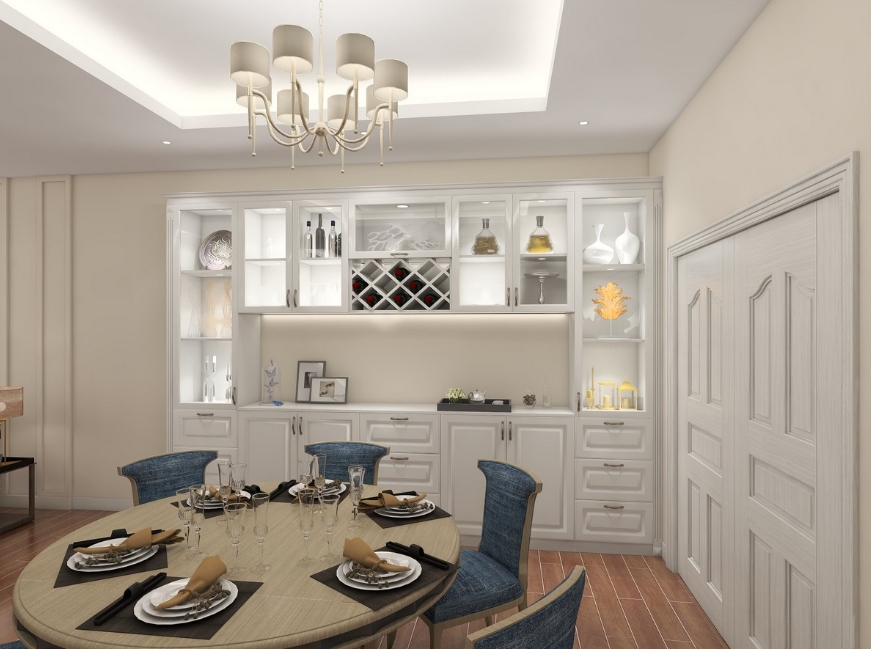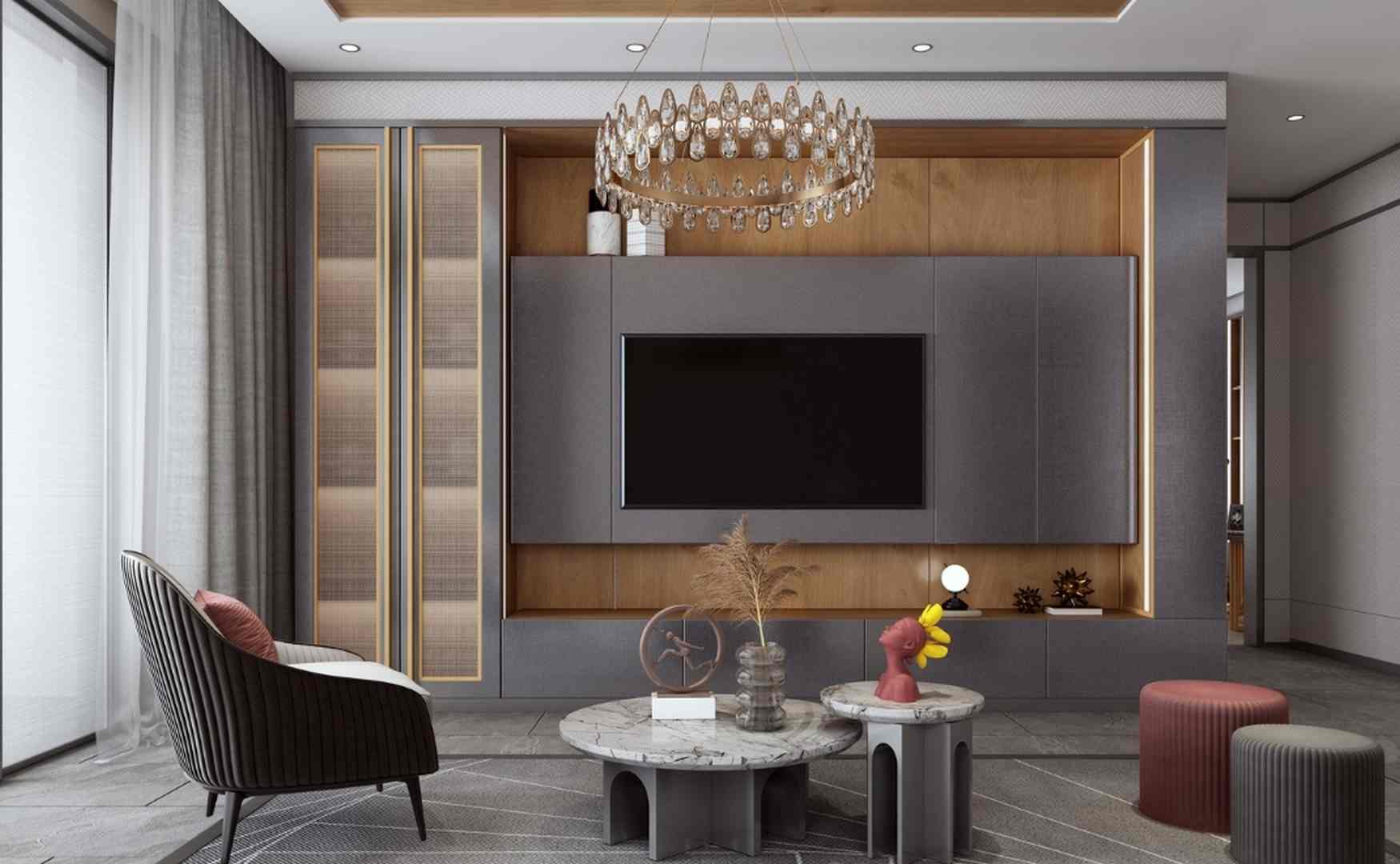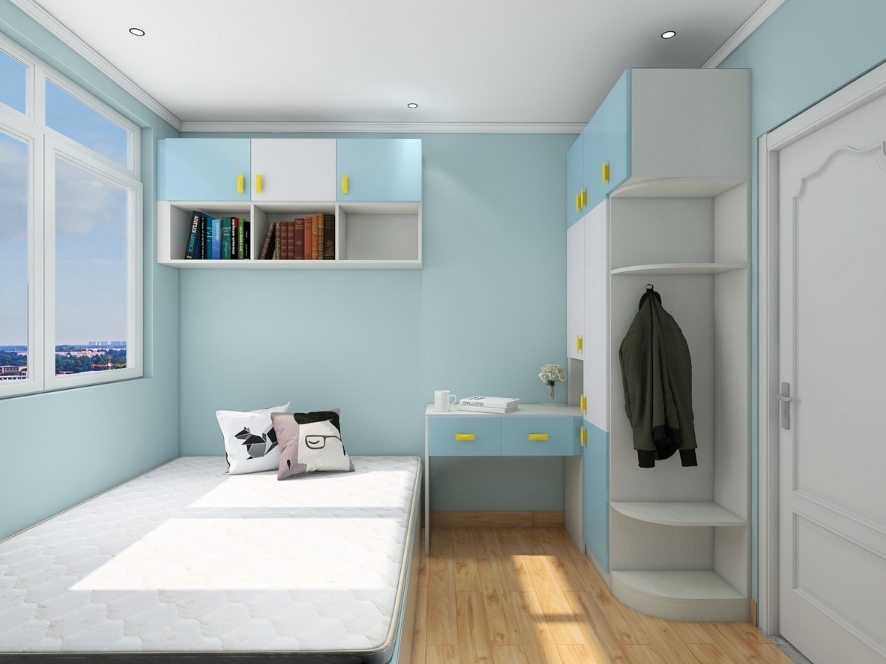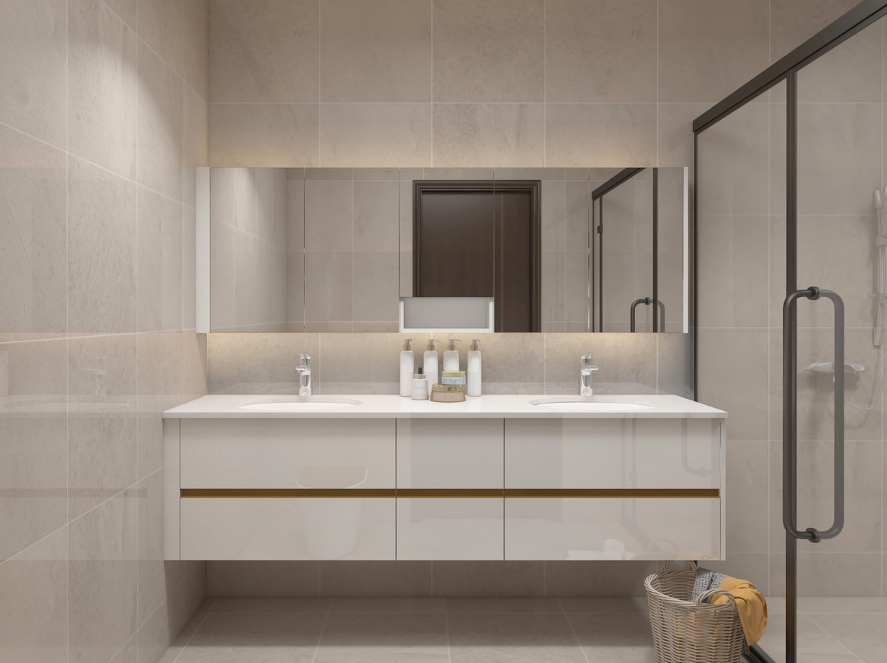When it comes to choosing cabinets for your home, the decision often boils down to two popular materials: plywood and solid wood. Both have their own unique strengths, and understanding these can make all the difference in creating a space that is both functional and stylish. In this guide, we’ll dive deep into the key differences, advantages, and considerations of plywood and wood cabinets. Whether you’re renovating your kitchen, upgrading your bathroom, or planning a custom project, this must-read guide will help you make an informed decision for cabinets that stand the test of time.
Plywood is an engineered wood product made by bonding several layers of thin wood sheets, which can include real wood, scrap wood, shredded wood fibers, MDF, or particleboard, using heat and adhesive. Each layer, typically around 3 millimeters thick, is laid with the grain direction alternating at 90-degree angles, which enhances the material's strength, stability, and durability. The plywood sheets come in various thicknesses, generally ranging from 3/16 inch to 3/4 inch, and standard dimensions are 4′ x 8′. Plywood is widely used in construction, furniture, and cabinetry due to its versatility and strength.
Plywood Types and Grading:
Softwood Plywood: Low-quality plywood, commonly used in budget-friendly cabinets.
Hardwood Plywood: Higher-quality plywood, often referred to as "cabinet grade," used in premium cabinets.
Tropical Plywood: Typically lower-quality softwood plywood, used in cost-effective cabinet construction.
Plywood is graded from A to D, with A being the highest grade, free from knots and defects.

Veneer-Core Plywood
Veneer-core plywood is one of the most popular choices for cabinetry. Made with layers of thin wood veneers bonded together, it offers strength and stability, making it ideal for creating durable, high-quality cabinets.
MDF-Core Plywood
MDF-core plywood features a medium-density fiberboard core sandwiched between two sheets of veneer. This construction eliminates the need for a crossband veneer, resulting in a highly uniform and consistent panel that’s ideal for smooth, high-quality surfaces.
Particleboard-Core Plywood
A cost-effective alternative, particleboard-core plywood uses a particleboard core with face and back veneers glued directly on top. While it’s cheaper, it doesn’t offer the same screw-holding strength as other types of plywood, but it still provides a smooth, stable surface, making it a budget-friendly option for cabinetry.
Lumber-Core Plywood
Lumber-core plywood is known for its superior strength, screw-holding ability, and flexibility. It’s an excellent choice for shelves and cabinetry that need to support heavy loads or endure frequent use, thanks to its enhanced bending strength and ability to return to shape after pressure.
Softwood Plywood
Made from evergreen trees like pine, cedar, and spruce, softwood plywood is widely used in construction. The cross-grain pattern of the thin layers of softwood veneers gives the plywood structural stability, reducing the likelihood of warping or cracking over time.
Hardwood Plywood
Hardwood plywood, typically made from deciduous trees like birch, oak, and maple, is a popular choice for high-end cabinetry and furniture due to its strength, durability, and aesthetic appeal. It’s perfect for projects that require both functionality and visual quality.
Special-Purpose Plywood
Special-purpose plywood is designed for specific applications, such as moisture resistance, fire resistance, or flexibility. By using different types of wood veneers with tailored properties, this plywood is engineered to meet the unique needs of particular projects, offering enhanced performance in specialized environments.

Solid wood, sourced directly from trees, is prized for its natural beauty and strength, with each piece showcasing unique grain and texture, adding both functionality and visual appeal to cabinets. It is typically made from kiln-dried sawn logs, which reduces moisture content and enhances the wood's strength and stability. However, even after drying, solid wood remains susceptible to expansion and contraction due to seasonal humidity changes.
Plywood is a more cost-effective option compared to solid wood, as it is made from thin layers of wood veneer, offering a unique look that can be customized to fit various tastes and budgets. While plywood is pricier than materials like MDF or particle board, its strength, quality, and environmental benefits justify the extra cost. Solid wood, on the other hand, tends to be more expensive due to its natural origin and the labor-intensive processes required for preparation and finishing, making plywood a budget-friendly alternative without compromising too much on quality.
Plywood cabinets are known for their durability, resisting warping, cracking, and wear better than materials like particle board, MDF, or solid wood. Made from hardwood, plywood is less likely to chip or dent, making it an excellent choice for heavy-use furniture or cabinetry. Its layered construction provides superior stability, helping it maintain shape despite environmental changes such as temperature and humidity fluctuations. In contrast, while solid wood is naturally attractive, its susceptibility to moisture and temperature changes can cause warping and splitting, making it less stable over time compared to plywood. Additionally, plywood’s consistency in strength ensures reliable performance, unlike the natural variation seen in solid wood.
Plywood kitchen cabinets are a popular choice for their attractive, customizable appearance, offering a variety of colors and finishes to suit any style. They can be easily refinished or painted for a fresh look, combining both durability and aesthetic appeal. While plywood provides a more uniform surface compared to solid wood, it can mimic various wood types and maintain a consistent design. Solid wood, on the other hand, offers a rich, authentic look with unique grain patterns, making it highly desirable for traditional and high-end cabinetry. Though plywood is versatile and customizable, solid wood is often preferred for its superior natural beauty, with options like cherry or mahogany adding an upscale touch to kitchen decor.

Plywood cabinets, made from thin layers of wood veneer, are more resistant to moisture compared to solid wood, though prolonged exposure can cause the core layers to peel and the cabinets to warp. While plywood can absorb a small amount of moisture without significant damage, it is still vulnerable to water over time. Solid wood, being porous, is more prone to moisture absorption, which can lead to bending, warping, and cracking. For better moisture resistance, plywood is generally the better option, but applying a sealant can further protect against staining or swelling. When choosing between plywood and solid wood, it’s important to consider the humidity levels in your area.
Plywood is lighter than solid wood, making it easier to handle and install, which is particularly beneficial for larger cabinet projects.
Plywood has minimal wastage compared to solid wood because it is sliced using machines that optimize wood usage. Wood veneer for plywood cores is produced efficiently with little waste, while solid wood blocks require splitting into multiple pieces, leading to significant waste.
Both plywood and solid wood cabinetry require regular maintenance to maintain their appearance and functionality, though the demands differ. Plywood, with its superior resistance to moisture and temperature changes, requires less frequent treatment, making it easier to maintain. Routine inspections for water damage, such as swelling or discoloration, are still necessary. In contrast, solid wood, valued for its natural beauty, needs more upkeep, including annual sealing or polishing to protect it from environmental damage, especially in humid conditions. Proper cleaning, repairs, and sealing after installation are essential for both types to prevent long-term issues.
Plywood is generally more environmentally friendly than solid wood due to its efficient use of resources, as it is made from thin layers of wood veneer and utilizes the entire log, resulting in less waste. It also incorporates wood from a variety of tree species, reducing the environmental impact of harvesting. Solid wood, while eco-conscious when sourced from sustainably managed forests, may involve more waste during production and faces challenges in ensuring responsible harvesting. High-end solid wood types, in particular, can have significant environmental impacts if not sourced sustainably. Both materials are relatively sustainable when responsibly harvested, but plywood’s efficient resource use makes it a more eco-friendly choice overall.

The quality of plywood is heavily influenced by the number of plies and the thickness of the wood. More plies typically result in greater stability and reliability, but this comes at a higher cost due to increased material use. Additionally, working with plywood that has many plies can be challenging, as layers may not always align perfectly. The core layer and the quality of the glue used to bond the plies are equally critical. Low-quality glue can lead to gaps or weaknesses, compromising the durability of the plywood. Therefore, when selecting plywood, it’s essential to evaluate the number of plies, the core material, and the adhesive quality, as these factors significantly affect its overall performance and longevity.
Engineered wood, made from wood fibers or particles bonded with adhesive, includes materials like particleboard, MDF, and HDF. While engineered wood cabinets are more affordable than plywood, they generally offer less durability and moisture resistance, making plywood a better choice for areas exposed to humidity, such as kitchens and bathrooms.
When to Choose Engineered Wood: Engineered wood is a cost-effective alternative for dry spaces like living rooms or bedrooms, where moisture resistance is less critical.
Drawbacks of Engineered Wood: Its susceptibility to cracking, warping, or splitting under moisture exposure limits its suitability for high-moisture environments.
What is Particle Board?
Particle board, or furniture board, is made by binding wood chips, mill shavings, and sawdust with resin and pressing them into flat sheets. Available in various densities, higher-density products offer more strength. It is commonly used in cabinet construction due to its affordability and ease of use but lacks durability and moisture resistance compared to plywood.
5 Key Differences:
Strength and Durability: Plywood is stronger and more durable than particle board, which is prone to sagging or breaking under heavy loads.
Moisture Resistance: Plywood outperforms particle board in humid or wet conditions, resisting swelling and disintegration.
Edge Strength: Plywood holds screws securely and maintains structural integrity, while particle board edges may crumble under stress.
Formaldehyde Emissions: Particle board adhesives often emit formaldehyde, whereas plywood is available in low- or formaldehyde-free options, making it safer for indoor air quality.
Repairability: Plywood is easier to repair, as it can be sanded and refinished, whereas particle board repairs are more challenging and less aesthetically pleasing.
While particle board is a budget-friendly choice, plywood offers superior strength, moisture resistance, and longevity, making it a better investment for most applications.
The primary distinction between plywood and particle board lies in their reaction to water. Particle board, when exposed to prolonged moisture, becomes swollen, spongy, and brittle, crumbling easily. In contrast, plywood resists moisture better, though it can still weaken and deform over time.
This makes plywood the preferred choice for moisture-prone areas, such as under-sink cabinets, where its resistance provides essential durability. However, for low-moisture spaces, particle board can be a cost-effective option, offering adequate performance at a lower price point.
While plywood’s moisture resistance is a strong selling point, it’s important to consider overall water damage risks to cabinets, drywall, and flooring during floods or leaks, as no material is entirely immune to such events. Balancing durability and budget is key when choosing between the two materials.
Plywood is inherently stronger than particle board, offering durability that resists sagging and deflection over time. Quality plywood cabinets maintain their structural integrity throughout their lifespan, making them a reliable choice for homeowners seeking long-term performance.
While particle board is generally less robust, it can still be a viable option for kitchen cabinets if the right density is chosen. High-density particle board is significantly stronger and more secure with screw fasteners compared to low-density alternatives. Opting for low-density particle board often results in sagging shelves and damaged hardware over time, reducing its overall value.
However, the strength of kitchen cabinets isn’t solely dependent on the material. Construction quality and proper installation play a critical role. Even solid wood cabinets can fail if the components are poorly joined. When selecting cabinets, prioritize well-constructed products over the material alone to ensure long-lasting performance and functionality.

Plywood and medium-density fiberboard (MDF) each have distinct advantages and drawbacks for cabinetry, making the choice dependent on specific needs.
4 Key Differences:
Weight: Plywood is lighter than MDF, making it easier to handle during installation and preferable for designs requiring reduced weight.
Edge Profile: MDF offers a smooth, consistent edge ideal for intricate designs, while plywood’s visible edge grain can suit certain aesthetics.
Screw Holding Capacity: Plywood excels in securing screws, providing reliable support for hardware and modifications. MDF, though smoother, is less effective at maintaining a strong grip.
Moisture Resilience: Plywood outperforms MDF in humid conditions, as MDF tends to swell and deteriorate with prolonged moisture exposure.
When deciding between the two, consider factors like installation ease, aesthetic preferences, hardware needs, and the environment to ensure durable and visually appealing cabinets.
Selecting the ideal cabinet material involves assessing key factors:
Usage and Durability: For heavy use, plywood offers excellent durability and resistance to wear. Solid wood, while luxurious, is better suited for decorative or lightly used cabinets.
Style Compatibility: Plywood's sleek, uniform look complements modern or minimalist decor, while solid wood’s natural grain enhances traditional or rustic styles.
Environmental Suitability: Plywood resists warping in humid or fluctuating climates, making it a reliable choice. Solid wood may require extra care to maintain its quality in such conditions.
Customization Options: Plywood’s ease of cutting and shaping provides design flexibility, while solid wood offers timeless charm with limited adaptability.
Cost and Maintenance: Plywood is cost-effective and low-maintenance, while solid wood’s higher upfront cost is offset by its aesthetic appeal and potential to increase property value.
By balancing your needs, budget, and style preferences, you can choose the material that best suits your cabinets’ purpose and enhances your home’s overall design.
SUNVIN is here to provide top-quality, wholesale plywood cabinets that fit your style and needs. From custom designs to durable kitchen and bathroom solutions, our plywood cabinets offer the perfect blend of strength, functionality, and aesthetic appeal. Contact us today to explore our range of premium cabinets and start your next project with confidence!